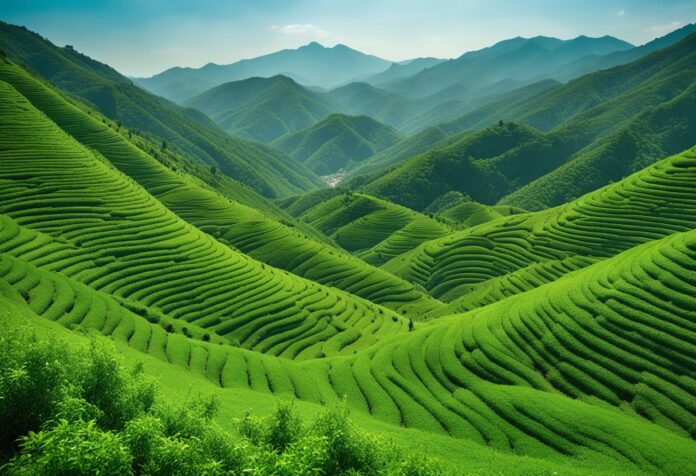ISLAMABAD, Apr 20 (APP): Just a stone’s throw away from the bustling capital city, the Margalla Hills stand as a serene sanctuary, teeming with life.
This sprawling stretch of the Himalayan foothills is not just a picturesque backdrop to Islamabad but a thriving ecosystem that shelters diverse flora, fauna, and avian species.
Travelling on mesmeric road snaking through this national park and leading to Damn-e-Koh and Pir Sohawa and beyond into Haripur district of Khyber Pakhtunkhwa, has always been a pleasure.
Residents of twin cities and other parts of the country throng small rest points established within the Margalla Hills National Park for a respite from busy life and enjoy a short journey instead of long way travelling to destinations in KPK and Northern areas.
It is not only a source of learning for students and researchers but also a pleasure spot for tourists especially when monsoon winds blow through its pines and its tops are covered with clouds.
The voice of blowing breeze when it passes touching the needles of pine trees is always soothing and memorable.
However, as urbanization creeps closer, conservationists are racing against time to protect this ecological gem.
The Margalla Hills National Park (MHNP), spanning over 17,000 hectares, is a treasure trove of biodiversity.
According to the Islamabad Wildlife Management Board (IWMB), the park is home to over 600 plant species, 250 bird varieties, 38 mammals and 27 reptiles.
Among its most famous residents, are the elusive leopards, gray gorals and endangered Himalayan pangolin.
“The Margalla Hills is a unique ecological zone where the Himalayan and Indus plains’ species converge,” says Dr. Shujaul Mulk Khan, an ecologist at Quaid-i-Azam University. “This makes it a critical habitat for species that are rare or declining elsewhere in Pakistan.”
Birdwatchers flock to Margalla hills for sighting the cheer pheasant, kalij pheasant, and the migratory peregrine falcon. Its Trail 3 and Trail 5 are particularly rich in avian diversity, making them a paradise for ornithologists.
The hills are cloaked in a mix of subtropical pine and deciduous forests, with species like pine, oak and fig dominating the landscape.
Wild olive, kachnar, and amaltas add bursts of color during flowering seasons. Medicinal plants, including wild mint and basil, are also found in abundance, often used by local communities.
“The vegetation here acts as a natural air filter for Islamabad,” noted a promiment botanist Dr. Sajida. “Deforestation or unchecked construction could disrupt this balance, leading to increased pollution and landslides.”
Despite its protected status, the Margalla Hills face mounting threats, construction, deforestation, littering and increasing tourist footfall.
The IWMB has been at the forefront of conservation, implementing measures like trail monitoring, anti-poaching patrols and awareness campaigns.
“We’ve reintroduced wildlife rescue teams and imposed fines on littering,” says IWMB Spokesperson Umar Bilal Khan. “But public cooperation is crucial. Many don’t realize that feeding monkeys or leaving trash behind disturbs the ecosystem.”
Compared to other green spaces in Pakistan—such as Lahore’s Jallo Park or Karachi’s Mangroves—the Margalla Hills enjoy better protection due to its national park status. However, experts argue that more stringent policies are needed to curb encroachment.
Local hikers and researchers share fascinating encounters. “Once, near Pir Sohawa, I spotted a leopard cub—proof that these hills still support apex predators,” recalls wildlife photographer Irshad.
Others speak of rare sightings of the yellow-throated marten or the playful Himalayan palm civet.
Yet, not all stories are hopeful. Villagers on the outskirts report shrinking wildlife corridors due to mounting population pressure and construction of more and more houses in its valleys.
“Earlier, we could see foxes and porcupines near our fields. Now, they have moved deeper into the hills,” says Haji Matloob, a resident of Talhar Village.
DG Environment CDA Nazia Abrar advocated for eco-tourism regulations, stricter enforcement against illegal logging and community engagement.
“The Margalla Hills National Park is more than just a recreational spot. It is a lifeline for variety of species including some rare species,” emphasizes Abrar. “If we lose them, we would lose our natural heritage.”
It was just a couple of decades back when a few people used to travel on a rough road leading from Damn-e- Koh to Pirsohawa that was all time joyous. Although with the passage of time and after construction of a carpeted road, people have been provided easier and safer travelling yet there are worries among nature lovers about protection of Margallas and saving its environment and habitat.
Occasional eruption of fire especially during summer is yet another threat to its forests, flora and fauna and wildlife.
As the city expands, the battle to preserve this ecological haven intensifies. For now, the Margalla Hills remain a testament to nature’s resilience—but for how long? The answer lies in the hands of policymakers, conservationists and every visitor who treads its trails.
Therefore let us educate the visitors of this national part, issue advisories for them and also put in place a penalizing mechanism for those littering, damaging ecosystem and endangering species residing in this park.

